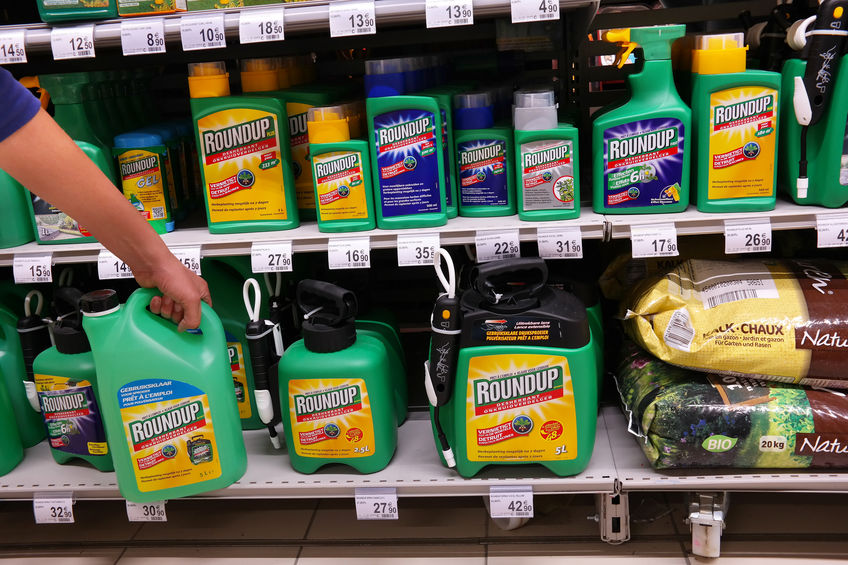Many people unduly fear chemical and other risks they don’t understand. When misfortune strikes, some look for a corporation to blame and sue. Litigation over glyphosate, the active ingredient in Roundup weedkiller, is a prime example.
Introduced in 1974 and licensed in 130 countries, the chemical is the world’s most widely used herbicide. Millions of homeowners use it regularly. Farmers employ it with “Roundup-Ready” corn, soybeans and other crops that are engineered to be resistant to it, to minimize weeding and tilling, preserve soil structure, and reduce erosion and water evaporation.
However, personal injury lawyers have targeted glyphosate, and a California jury recently awarded $289 million in damages (later reduced to $78 million) to a former groundskeeper, who claimed the chemical caused his non-Hodgkin’s lymphoma and Monsanto deliberately or negligently failed to warn him adequately about the dangers.
The case is on appeal, and a second trial is in preliminary stages. Over 9,300 more cases could soon be in the docket against Monsanto and its new owner, Bayer.
If the allegations are correct, compensatory and even punitive damage awards would be justified, although what might be “reasonable” is subject to debate. However, reputable evidence strongly suggests that there is no connection between glyphosate use and lymphomas or other cancers.
The entire mega-litigation argument hinges on one study — and District Court Judge Vince Chhabria will soon decide whether it should be admissible at the next trial. Experts say the study is highly suspect, possibly even fraudulent, and should be disallowed.
Multiple studies by respected organizations worldwide have concluded that glyphosate is safe and non-carcinogenic. Reviewers include the U.S. Environmental Protection Agency, European Food Safety Authority, European Chemicals Agency, Food and Agriculture Organization, Germany’s Institute for Risk Assessment, Health Canada, Australia’s Pesticides and Veterinary Medicines Authority, and others
The 25-year, multi-agency U.S. Agricultural Health Study of 89,000 farmers, commercial applicators and their spouses found no glyphosate-cancer link. The 2017 U.S. National Cancer Institute study of 54,000 pesticide applicators reached the same conclusion.
Only one study, by the France-based International Agency for Cancer Research (IARC), says otherwise. However, IARC does no research of its own. It simply reviews existing research and classifies chemicals as definitely, probably or possibly a cause of cancer in humans — often at extremely high doses that humans are highly unlikely to encounter in the real world. Nor does the agency conduct “risk assessments” to determine exposure levels at which chemicals might actually have adverse effects on people.
Indeed, some chemicals may cause cancer at extremely high doses, but be completely harmless at levels encountered in our daily lives.
To date, IARC has studied over 900 substances — and found only one was “probably” not carcinogenic. Its antiquated approach lumps bacon, sausage, sunlight and plutonium together in its “definitely carcinogenic” category. Its list of “possible” carcinogens includes pickled vegetables and caffeic acid, which is found in coffee, tea, and numerous fruits and vegetables, including apples, blueberries, broccoli, kale and onions. Glyphosate is listed as “probably” cancer-causing.
Even more problematic is the process IARC followed in reaching its 2015 decision on glyphosate, based on evidence from rodent studies. As subsequent reviews by National Cancer Institute statistician Robert Tarone, cancer epidemiologist Geoffrey Kabat, and investigative journalists Kate Kelland and David Zaruk confirmed, that process was tainted from the beginning.
IARC’s glyphosate review was proposed by U.S. government statistician Christopher Portier, who also served as the only outside “consulting expert” for the IARC “working group” that evaluated the chemical. He did so while also being paid as an advisor to the anti-chemical Environmental Defense Fund. Then, immediately after IARC issued its ruling, Mr. Portier signed a contract to receive $160,000 for serving as a litigation consultant for two law firms that were preparing to sue Monsanto on behalf of “glyphosate cancer victims.”
During its deliberations, Mr. Tarone concluded, the IARC panel highlighted certain positive results from rodent studies it relied on — while ignoring contradictory results from the same studies. Overall, the data do not support the agency’s decision, he determined.
Ms. Kelland found 10 instances where “a negative conclusion about glyphosate leading to tumors was either deleted or replaced with a neutral or positive one” between draft and final versions of the IARC report. Mr. Portier himself admitted the animal studies subgroup report concluding “limited evidence” of carcinogenicity somehow got upgraded to “sufficient evidence” for the final report.
One member of the working group deliberately failed to mention a study exonerating glyphosate, because it hadn’t yet been published. But that was because he (as one of the authors) held it back from publication until after IARC rendered its decision.
The 1993 U.S. Supreme Court decision in Daubert v. Merrell Dow Pharmaceuticals requires that parties in cases like these glyphosate cancer claims must prove to the presiding judge’s satisfaction that the scientific evidence they intend to present is relevant and reliable. It must have been tested and/or peer-reviewed against accepted standards, must be accepted in the applicable scientific community, and must meet basic standards of honesty, integrity and credibility.
IARC’s claim that glyphosate is carcinogenic is such an outlier, so beneath scientific norms, that allowing it in future trials would cause legal and agricultural chaos.
This article originally appeared in The Washington Times
